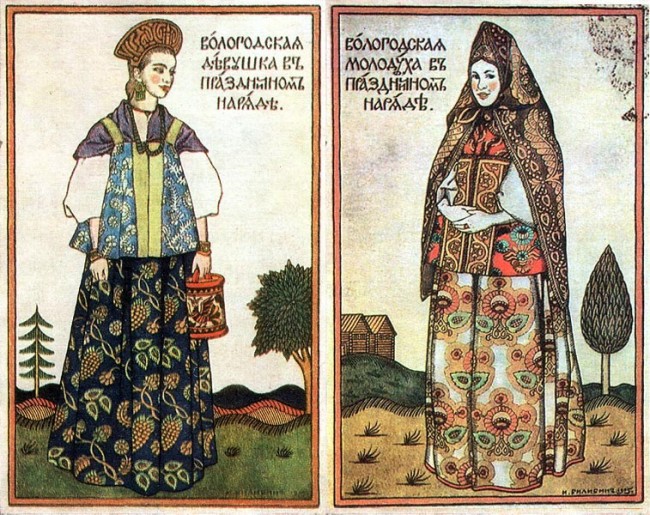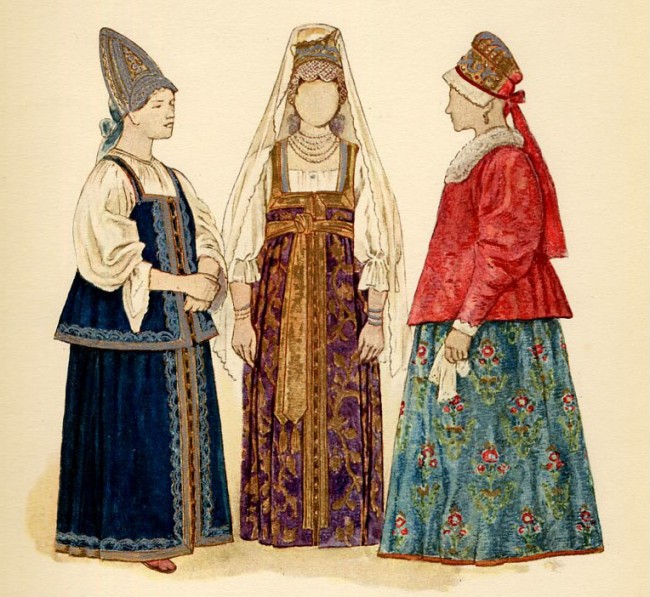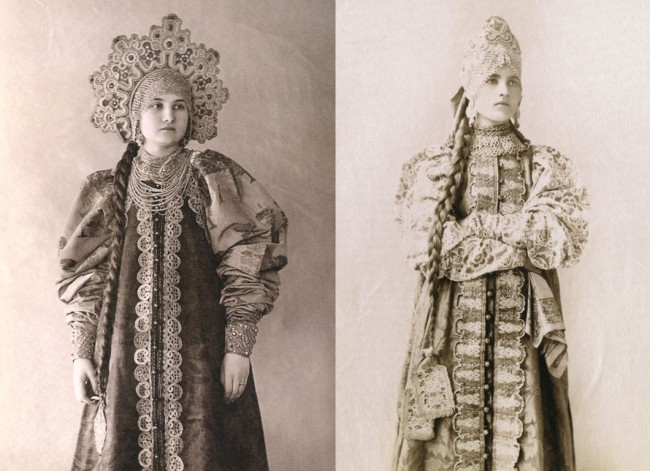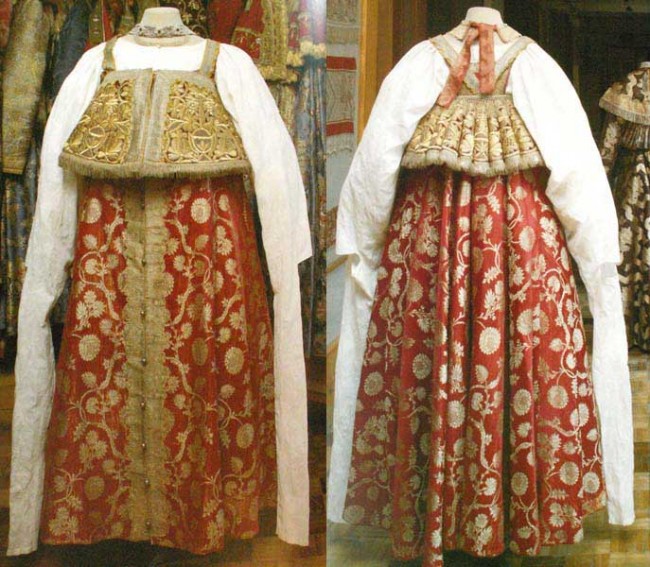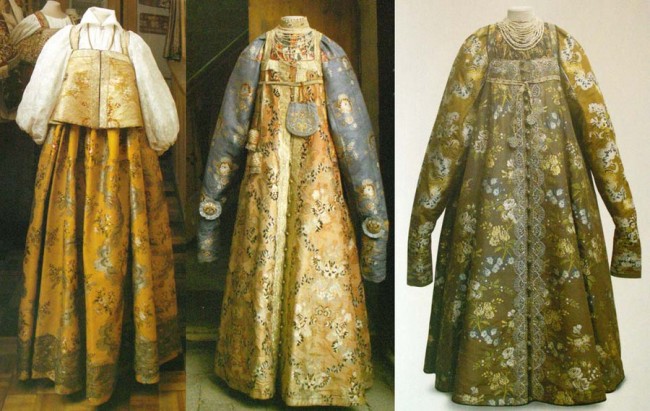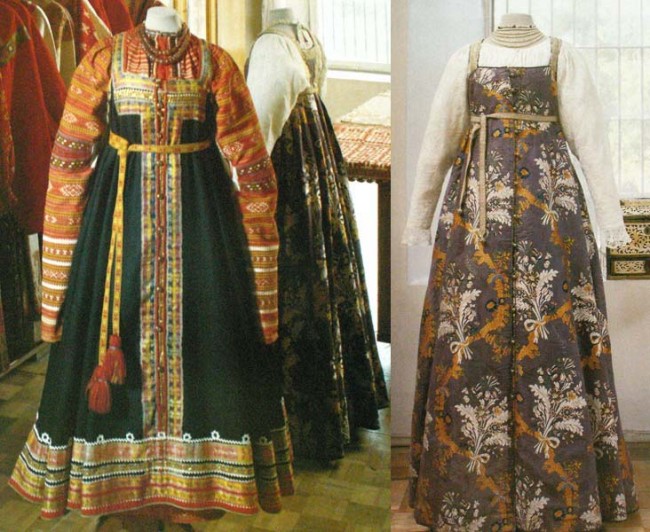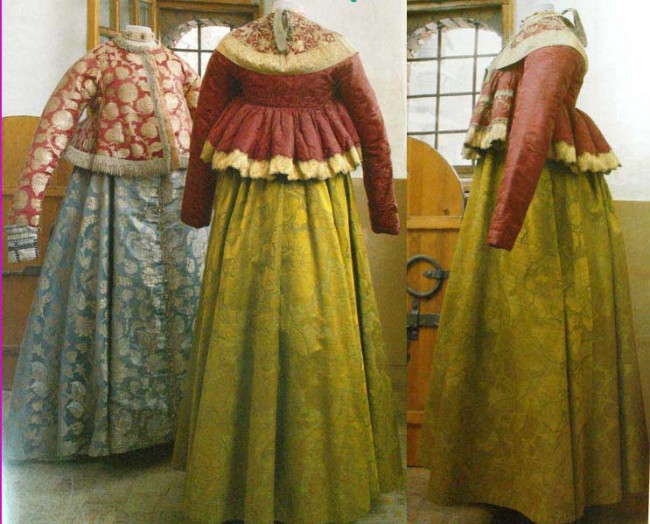A Brief History of the Sarafan
The word “sarafan” might not be familiar to many, but most people easily recall how a traditional Russian costume might look. The sarafan is, in fact, built around the concept of a long, trapeze-shaped dress that, over the centuries, went under the names of “feryaz”, “klinnik” and, finally, “sarafan”. The word itself takes its origin from the Persian language, but the clothing came to Russia from Europe back in the 13th century and survived well until the 20th century, before various changes led to their decline.
Initially worn by men, the sarafan was modified through the centuries and gradually became a wardrobe staple for women of various social backgrounds across the country. Originally, it consisted of a single piece with thin shoulder straps, worn with a sleeveless vest, a “dushegreya”, thus creating a desirable shape of two triangles inter-crossing in the middle. The sarafan was executed in plain fabrics for work and daily wear, but could look remarkably festive when made with the more sumptuous materials and embroideries reserved for special celebrations. Interestingly, the width of the sarafan distinguished not only the wearer’s social status, but also her regional background and even which type of occasion that the sarafan was worn for.
The sarafan’s popularity transcended social strata until the beginning of the 18th century, when Peter the Great radically reformed the look of upper and middle classes. The court members were now obliged to wear European clothing, thereby renouncing the long-standing tradition of sarafans. Mostly worn by peasant girls and women as well as merchants’ wives, sarafans continued to exist in their independent form, evolving according to climate changes and the geographical expansions of the country. Peasant costumes were marked by their extensive use of large floral embroidery, the striking colours of which were only intensified by the contrast with the plain white shirts popular at the time. Blue linen sarafans were the most widely worn and were often decorated with natural motifs and rows of buttons. Red sarafans, equally popular with the countryside population, were designated for weddings only, although the bride was not obliged to wear a red sarafan on the day.
By the beginning of the 20th century, the peasant population of the country had dramatically decreased, and with it went the tradition of wearing sarafans. Widely regarded as an item of the past, they were now seen as traditional clothing for certain folk celebrations, and were immortalised in the nostalgic paintings meditating on times long gone. Simple, plain versions of the sarafan, however, evolved gradually into a summer dress, favoured by women in Russia for its practicality and lightness which made it perfect for a bright summer day. The legacy of traditional Russian sarafans now lives on only in this utterly modern form or in costumes, but their remarkable story left a lasting legacy in Russia’s social, cultural and, of course, sartorial history.
 Evgenia Dorofeeva is a photographer, fashion writer and an avid traveller based in London. Her love of fashion comes from childhood spent in a grandmother’s atelier, while writing is a hobby that is bound to become a full-time occupation. Evgenia’s dream is to create a worthy home collection of evening dresses – story-tellers, performers and fairy godmothers in their own right.
Evgenia Dorofeeva is a photographer, fashion writer and an avid traveller based in London. Her love of fashion comes from childhood spent in a grandmother’s atelier, while writing is a hobby that is bound to become a full-time occupation. Evgenia’s dream is to create a worthy home collection of evening dresses – story-tellers, performers and fairy godmothers in their own right.

-
Liudmila Lezhneva
-
Lieutenant BaconWaffles
-
harriet
-
Umerue WOW
-
Natalia Weir
-
Elka

